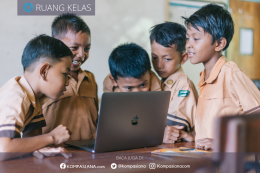Based on insights from psycholinguistics, here are some recommendations that educators in Indonesia can implement.
First, teachers can use a more interactive and contextual approach in language teaching. This can include using images, videos, or other visual aids that can help children connect words with meanings they understand. Additionally, teachers can use technology to assist children who are more accustomed to digital media in the language learning process.
Second, it is important for teachers to pay attention to their students' language backgrounds. Children from areas with different mother tongues may require a more personalized approach when learning Indonesian or foreign languages. Understanding individual differences in language acquisition will help teachers create a more inclusive and supportive learning environment.
Conclusion
Psycholinguistics provides deep insights into how children learn and use language, especially in the context of education in Indonesia. By understanding how children think and speak, educators can develop more effective and adaptive teaching strategies. This is especially important in a multilingual country like Indonesia, where language challenges often hinder the learning process. By utilizing psycholinguistic approaches, we can help Indonesian children develop better in their language and thinking skills, producing a generation that is more prepared to face global challenges in the future.
References
1. Brown, H. D. (2007). Principles of Language Learning and Teaching. Pearson Education.
2. Clark, E. V. (2003). First Language Acquisition. Cambridge University Press.
3. Gass, S. M., & Selinker, L. (2008). Second Language Acquisition: An Introductory Course. Routledge.
4. Vygotsky, L. S. (1978). Mind in Society: The Development of Higher Psychological Processes. Harvard University Press.
Baca konten-konten menarik Kompasiana langsung dari smartphone kamu. Follow channel WhatsApp Kompasiana sekarang di sini: https://whatsapp.com/channel/0029VaYjYaL4Spk7WflFYJ2H







